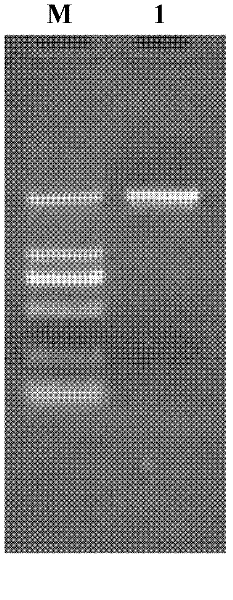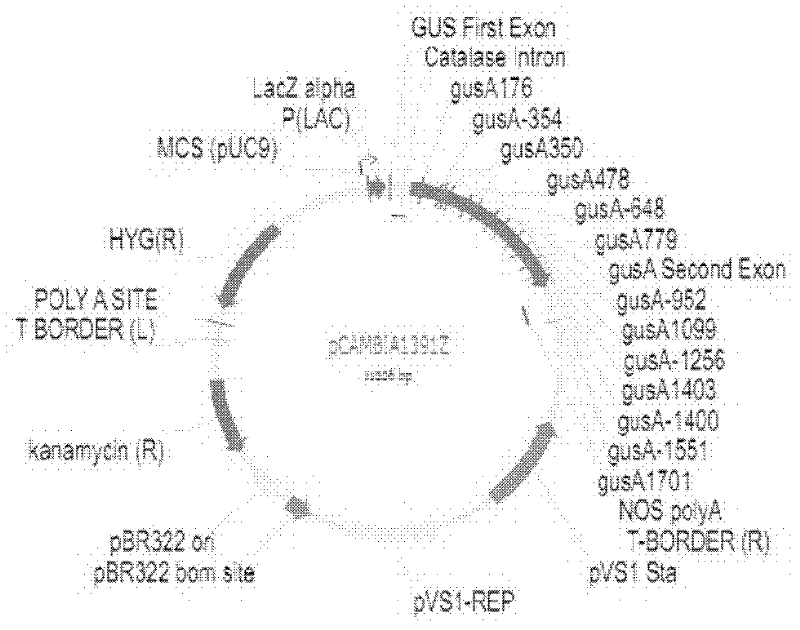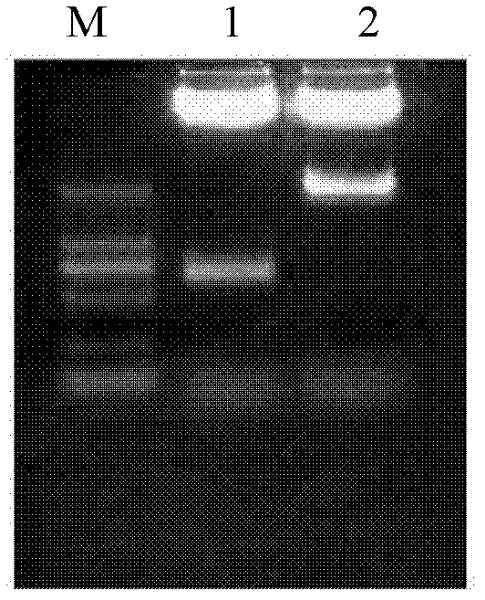Rice histone deacetylases gene HDT701 promoter and application thereof
A deacetylase and histone technology, applied in application, genetic engineering, plant genetic improvement and other directions, can solve problems such as restricting the promotion and development of transgenic crops, achieve good application prospects, increase local expression, and avoid unnecessary waste. Effect
- Summary
- Abstract
- Description
- Claims
- Application Information
AI Technical Summary
Problems solved by technology
Method used
Image
Examples
Embodiment 1
[0032] Example 1: Promoter of OSHDT701 Gene: Cloning of HDT701 Promoter
[0033] 1. The japonica rice variety Nipponbare was used as the experimental material, and the genomic DNA was extracted by the CTAB method as a template.
[0034] 2. According to the sequence of the known rice gene OSHDT701 (Genebank accession number is AK072845) on NCBI, primers were designed 2 KB before the start codon, and PCR amplification was performed using the genomic DNA of the japonica rice variety Nipponbare as a template.
[0035] Upstream primer: F: 5'-TGAAGCTTTAAGGCGAATAAGCGAAAC-3'
[0036] Downstream primer: R: 5'-CTCTGCAGGAAGAACCCTAGAAAAGAAA-3'
[0037] The PCR reaction was carried out in a 50ul system, and the reaction parameters were: pre-denaturation at 94°C for 5min; denaturation at 94°C for 30s, annealing at 58.9°C for 45s, extension at 72°C for 2min, and 35 cycles; extension at 72°C for 5min. PCR amplification products were separated by 1.0% agarose gel electrophoresis ( figure 1 ...
Embodiment 2
[0039] Embodiment 2: Construction of HDT701-GUS fusion expression vector
[0040] A large number of plasmids were extracted from positive clones with correct sequencing in Example 1. The extracted plasmid and vector PCAMBIA1391Z (its structure is as follows figure 2 shown) were digested with HindIII and PstI at the same time, the target fragment was recovered and ligated to obtain the expression vector PCAMBIA1391Z-HDT701P with HDT701 as the promoter and its downstream gene as GUS. There is a SpeI restriction site at 700bp of the HDT701P fragment, and there is no SpeI restriction site on PCAMBIA1391Z, so a small fragment of 0.7 KB ( image 3). The positive plasmid was transferred into Agrobacterium EHA105 by freeze-thaw method, and the positive clone transferred into the expression vector PCAMBIA1391Z-HDT701P was identified by colony PCR and used for rice transformation.
Embodiment 3
[0041] Embodiment 3: Agrobacterium tumefaciens transformation rice mature embryo callus
[0042] The genetic transformation method mediated by Agrobacterium EHA105 (Hiei et al., Efficient transformation of rice (Oryza sativa L.) mediated by Agrobacterium and sequence analysis of the boundaries of the T-DNA, 1994, Plant Journal 6: 271-282) will The constructed plant fusion expression vector PCAMBIA1391Z-HDT701P was introduced into the callus of mature embryos of the japonica rice variety Zhonghua 11 to obtain transgenic plants.
[0043] The steps of Agrobacterium-mediated genetic transformation are as follows:
[0044] 1. Callus induction
[0045] Ripe rice seeds are dehulled, treated with ethanol with a volume fraction of 70% for 1 min, and sterilized with a mercuric chloride solution with a mass fraction of 1% for 15 min; the seeds are washed with sterilized water for 3 to 5 times, the first few times for 3-5 min, and the last time for 10 min . The sterilized seeds were in...
PUM
 Login to View More
Login to View More Abstract
Description
Claims
Application Information
 Login to View More
Login to View More - R&D
- Intellectual Property
- Life Sciences
- Materials
- Tech Scout
- Unparalleled Data Quality
- Higher Quality Content
- 60% Fewer Hallucinations
Browse by: Latest US Patents, China's latest patents, Technical Efficacy Thesaurus, Application Domain, Technology Topic, Popular Technical Reports.
© 2025 PatSnap. All rights reserved.Legal|Privacy policy|Modern Slavery Act Transparency Statement|Sitemap|About US| Contact US: help@patsnap.com



